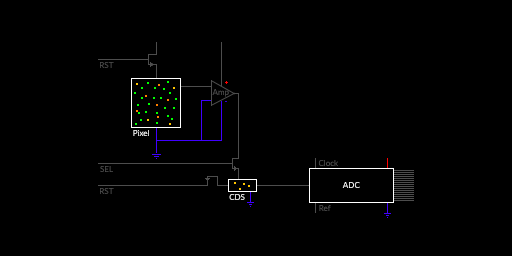The key factor with CCD sensors when it comes to high speed (or what we call Lucky) imaging is the readout speed. CCD cameras due to the nature of their technology, which moves charge (electrons) from one pixel to the next down the columns, one row at a time, favors SLOW readout. Further, due to this charge-shifting nature of CCD sensors, there is usually no room on the sensor die for the more complex kind of readout logic that CMOS sensors employ (per-pixel amps, per-column ADC and CDS units, etc.) As such, all pixels on the sensor are usually actually "read" by a single, or possibly pair of, off-die amp and ADC units. This also favors SLOW readout, as at a high frequency these components also have more noise (input referred noise, the primary sources of read noise.)
So for clean, low noise results, CCD sensors generally must be operated at lower frequencies, which leads to slower readout. In fact, many popular larger-frame CCD cameras can require many tens of seconds to read out a single frame! Obviously for high speed imaging, having to spend 20-30 seconds just reading a frame is untennable.
CMOS sensors differ from CMOS in that rather than moving charge around the sensor, then off the sensor, they immediately convert charge to voltage right in the pixel. That voltage is then simply "applied" to the rest of the readout logic.
Further, with all of these components on the sensor die, they can be highly parallelized. Pixel amps are usually shared among small groups of pixels, either 2 or 4, so for sensors with tens of millions of pixels, you have millions of amps. Each amp can operate concurrently.
Most modern CMOS sensors use per-column ADC units, also on the sensor die. For sensors with thousands of columns, there are thousands of ADC units. Again, these can all operate concurrently.

With all of this high parallelism on the sensor die, this allows every pixel of a given row to be read out simultaneously...to the tune of thousands of pixels at once concurrently, in contrast to CCD where each pixel must, in fact, be read out serially one (or maybe two) at a time. Because each readout circuit is replicated per shared pixel or per column, they do not need to be clocked each at a high frequency. Speed comes from parallelism, not clock. So you maintain the benefits of low frequency (slower clock) for reducing noise (same as with CCD), but can still read out immense volumes of data very quickly.
With all of this parallel performance, reading the full sensor frame in a fraction of a second is possible. This allows very high frame rates (with some CMOS cameras that have hardware ROI features so you can reduce the area of the sensor actually read out), frame rates can range from 20-40fps for the entire frame to as high as 700-800fps for smaller ROI. For the most part, true lucky imaging, where you are operating at the frequency of scintillation (form of atmospheric turbulence caused by the jetstream), occurs with exposures around 10ms, or 1/100th of a second, 100fps. At this frequency you can discard poor quality subs due to seeing, keep only the high quality subs, and achieve high resolution, high detail images of moving objects like ISS, satellites, planets, etc.
It should be noted that the slower readout of CCD is not necessarily always a bad thing. A lot of astrophotography, long exposure stuff, is still done with CCD cameras. And the quality can be exceptional. CCD is slowly diminishing over time largely due to cost. A larger frame (36x24mm, 37x37mm, 52x52mm, etc.) monochrome CCD sensor is easily in the several tens of thousands of dollars range, up into the hundreds of thousands of dollars.
There are some new 36x24mm monochrome CMOS sensors coming onto the market from Sony soon that will be finding their way into cameras that are sub-$10k, and one may even be closer to $5k. While this may seem crazy expensive, in relative terms to similar larger frame CCD cameras, these are actually huge savings. The price of smaller CMOS sensors so far has been giving CCD cameras a run for their money, and have opened up the world of more advanced astrophotography to a much, much broader range of amateurs than ever before.
Cost is also a huge driver of CMOS vs. CCD.



